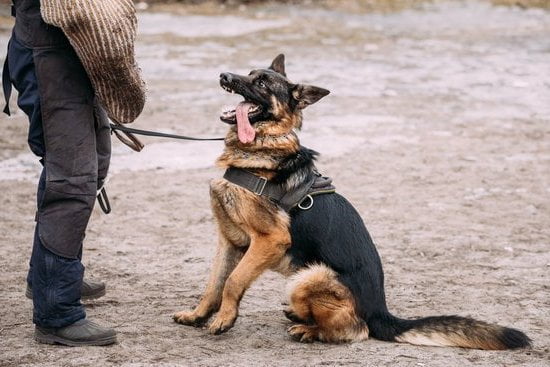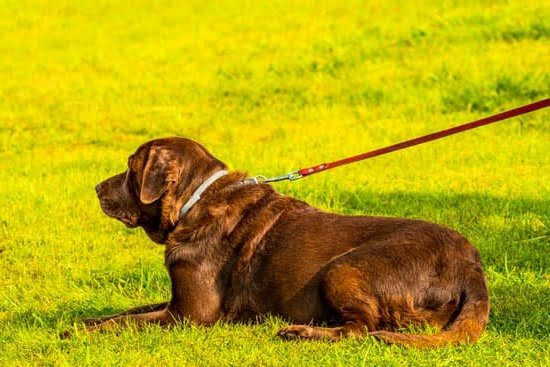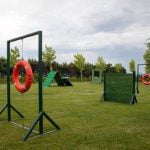It’s a common concern for many pet owners: how to train my dog not to chase cars. Dogs chasing after vehicles can pose serious risks to both the pet and drivers on the road. Understanding the dangers of this behavior is crucial in implementing effective training methods to keep your furry friend safe.
The instinctual behavior of dogs chasing cars can stem from their natural prey drive, herding instincts, or simply curiosity. However, allowing this behavior to continue unchecked can lead to potentially harmful consequences. From accidents and injuries to legal liabilities, the risks involved in dogs chasing cars are significant.
In this article, we will delve into the reasons behind why dogs chase cars, explore the potential consequences of this behavior, and provide practical tips and techniques on how to train your dog not to chase vehicles. By establishing a strong foundation through basic training techniques, implementing positive reinforcement strategies, and practicing consistency in your training plan, you can help curb your dog’s car-chasing tendencies and promote a safe environment for everyone involved.
Why Do Dogs Chase Cars? Exploring the Instinctual Behavior
Dogs have been known to chase cars for various reasons, and understanding this instinctual behavior is crucial in addressing and correcting it through proper training techniques. One of the main reasons why dogs chase cars is their predatory instincts. Dogs have a natural drive to chase moving objects, as it mimics their hunting instincts in the wild. This behavior can be triggered by the sight, sound, or even the smell of a passing car.
To effectively train your dog not to chase cars, it is essential to first recognize and acknowledge the root cause of this behavior. By understanding why dogs chase cars, pet owners can implement training methods that cater to their dog’s specific needs and tendencies. Additionally, recognizing the triggers that lead to chasing behavior can help pet owners proactively address and redirect their dog’s focus before it escalates.
One way to combat the urge for dogs to chase cars is through consistent training and positive reinforcement. By providing alternative outlets for your dog’s energy and prey drive, such as toys or interactive games, you can redirect their attention away from passing vehicles.
Using commands like “leave it” or “stay” when a car approaches can also help reinforce obedience and control in high-stimulation situations. Patience, consistency, and a deep understanding of your dog’s individual needs are key components in successfully training them not to chase cars.
The Risks Involved
Dogs chasing cars can pose serious risks and potential consequences not only for the dog itself but also for drivers and pedestrians. One of the most immediate dangers is the risk of the dog being hit by a moving vehicle, resulting in severe injuries or even fatalities. This can be a heartbreaking experience for any pet owner and can be easily preventable with proper training.
In addition to the physical harm that can come from chasing cars, there are also legal consequences to consider. If your dog causes an accident or damages someone else’s property while chasing cars, you as the owner may be held liable for any resulting damages. This could lead to expensive vet bills, legal fees, or even lawsuits, adding unnecessary stress and financial burden.
Furthermore, allowing your dog to chase cars without intervention can reinforce this behavior over time, making it more difficult to break this habit in the future. It is crucial to address this issue promptly and effectively through appropriate training methods to ensure the safety of your dog and others around them. In the following sections, we will explore various training techniques and strategies on how to train your dog not to chase cars effectively.
Establishing a Strong Foundation
In addition to basic commands, leash training is instrumental in preventing dogs from chasing cars. Proper leash training ensures that you have control over your dog’s movements, particularly when near roads or areas with moving vehicles.
Start by using a shorter leash to restrict your dog’s movement and gradually work towards off-leash training once they have demonstrated a solid understanding of obedience and boundaries. It is essential to practice leash walking in different environments to reinforce good behavior and minimize the risk of car chasing incidents.
Moreover, utilizing positive reinforcement techniques can be highly effective in discouraging car chasing behavior in dogs. When your dog displays appropriate behavior, such as ignoring passing cars or responding promptly to commands, reward them with treats, praise, or playtime. This positive association reinforces the desired behavior and motivates your dog to repeat it. Consistency is key when using positive reinforcement, so be sure to reward your dog every time they exhibit behavior that aligns with not chasing cars.
| Training Techniques | Description |
|---|---|
| Basic Commands | Teaching commands like “sit,” “stay,” and “come” establishes boundaries and leadership. |
| Leash Training | Proper leash training gives control over a dog’s movements, especially near roads. |
| Positive Reinforcement | Rewarding good behavior with treats or praise can discourage car chasing tendencies. |
Implementing Positive Reinforcement
Understanding Positive Reinforcement
Positive reinforcement is a powerful training technique that involves rewarding your dog for exhibiting the desired behavior. The key to effectively using positive reinforcement is to identify what motivates your dog, whether it’s treats, verbal praise, or toys. By providing a reward immediately after your dog performs the desired behavior, you are reinforcing that behavior and increasing the likelihood that it will be repeated in the future.
Creating a Reward System
When implementing positive reinforcement to train your dog not to chase cars, it’s important to establish a consistent reward system. Start by choosing a high-value treat that your dog loves and use this as a reward for good behavior.
Whenever your dog refrains from chasing cars or responds to a command redirecting their attention, promptly give them the treat and offer plenty of praise. Consistency in providing rewards will help reinforce the desired behavior and make training more effective.
Setting Realistic Goals
Training your dog not to chase cars using positive reinforcement requires patience and consistency. It’s essential to set realistic goals and gradually increase expectations as your dog progresses. Start with short training sessions focused on basic commands and gradually introduce distractions such as moving vehicles.
Celebrate small victories along the way and adjust your training plan as needed based on your dog’s responses. Remember, every dog learns at their own pace, so be patient and persistent in your efforts to train your furry friend effectively on how to train my dog not to chase cars.
The Power of Distraction
One of the most effective ways to prevent your dog from chasing cars is by using distraction techniques. By redirecting your dog’s attention away from passing vehicles, you can help them focus on more positive and appropriate behaviors. This section will explore the use of toys, commands, and other methods to effectively distract your dog from chasing cars.
Utilizing Toys as Distractions
Toys can be a valuable tool in redirecting your dog’s attention when they are tempted to chase cars. When you notice your dog becoming fixated on a passing vehicle, quickly introduce a favorite toy or interactive puzzle to shift their focus. Engaging your dog in playtime can help them release pent-up energy and redirect their instincts towards a more suitable activity.
Training Commands for Redirecting Attention
In addition to using toys, training commands can play a crucial role in preventing your dog from chasing cars. Teaching commands like “sit,” “stay,” or “leave it” can help you regain control of your dog in high-stress situations. Practice these commands consistently during training sessions and reward your dog for obeying them. With time and patience, your dog will learn to respond to these cues even when faced with distractions like passing vehicles.
Combining Toys and Commands for Effective Distraction
This dual approach can reinforce positive behavior while providing a healthy outlet for your dog’s energy and instincts. With consistent practice and reinforcement, you can effectively train your dog not to chase cars through the power of distraction.
Safety Measures
When it comes to keeping your dog safe outdoors, especially when dealing with the issue of chasing cars, there are several tips and precautions you can take to ensure your furry friend stays out of harm’s way. Here are some safety measures to consider:
- Always keep your dog on a leash when outside. This will give you better control over your dog and prevent them from running off after passing cars.
- Choose safe walking routes that are away from busy roads or highways. Opt for parks or trails where there is less traffic to reduce the temptation for your dog to chase cars.
- Invest in reflective gear or LED lights for your dog’s collar or leash, especially if you walk them at night. This will make them more visible to drivers and decrease the chances of accidents.
In addition to these safety measures, it’s important to also train your dog not to chase cars through consistent training and positive reinforcement techniques.
- Practice obedience training with commands like “sit,” “stay,” and “come.” By reinforcing these commands regularly, you can better control your dog’s behavior and prevent them from chasing cars.
- Use high-value treats or toys as rewards when your dog listens to commands and ignores passing cars. Positive reinforcement can help in encouraging good behavior and teaching your dog that listening to you is more rewarding than chasing after vehicles.
- Consider enrolling your dog in a professional training program or working with a certified dog trainer if you’re struggling to train them on your own. A professional can provide guidance, support, and tailored solutions to address specific behavioral issues like car chasing.
By implementing these safety measures and training techniques, you can effectively teach your dog not to chase cars and keep them safe during outdoor activities. Remember, consistency is key in training success, so be patient and persistent in working with your furry companion.
Consistency Is Key
When developing a training plan, consistency is crucial. This means setting aside dedicated time each day to work on specific exercises that discourage car chasing behavior. Incorporate basic obedience commands like “sit,” “stay,” and “come” into your daily routine. Consistent practice will reinforce these commands and help redirect your dog’s focus away from cars when outdoors. Additionally, incorporating positive reinforcement techniques such as treats, praise, or toys can motivate your dog to display good behavior.
Sticking to your training plan requires commitment and patience. It is essential to stay calm and composed during training sessions, as dogs are sensitive to their owners’ emotions. Consistency in both commands and rewards will help create a predictable environment for your dog, reinforcing the desired behavior over time.
Remember that every dog is different, so be patient and adjust your training plan as needed based on your pet’s progress. With dedication and perseverance, you can successfully train your dog not to chase cars and enjoy safer outdoor adventures together.
Seeking Professional Help
One key factor to consider when deciding whether to hire a professional dog trainer is the severity of your dog’s behavior. If your dog has a strong instinctual drive to chase cars or has already displayed signs of dangerous behavior while doing so, seeking help from a professional may be necessary. A trainer can assess the specific triggers that cause your dog to chase cars and develop a specialized training plan to address these issues effectively.
Additionally, professional dog trainers have access to a variety of tools and resources that can aid in training sessions, such as specialized equipment or advanced training techniques. They can also provide ongoing support and guidance throughout the training process, helping you stay on track with consistency and providing insight into how to modify training strategies if needed.
By working with a professional trainer, you can feel more confident in addressing your dog’s behavior and ultimately keep them safe from the dangers of chasing cars.
Conclusion
In conclusion, training your dog not to chase cars is essential to ensure their safety and the safety of others. By understanding the dangers of this behavior and exploring the instinctual reasons behind it, you can take steps to prevent potential consequences. Establishing a strong foundation through basic training techniques, implementing positive reinforcement, and using distractions can help redirect your dog’s attention away from cars.
Consistency is key when it comes to training your dog not to chase cars. Developing a training plan and sticking to it will help reinforce good behavior and discourage the urge to chase vehicles. Additionally, incorporating safety measures when outdoors, such as using a leash or harness, can further prevent dangerous situations. Remember that seeking professional help from a dog trainer may be necessary if you’re facing challenges in training your dog on your own.
By celebrating progress and building a strong relationship with your dog through training, you are not only teaching them vital skills but also strengthening the bond between you both. Patience, dedication, and positive reinforcement are crucial elements in successfully training your dog not to chase cars. With time and effort, you can help your furry companion learn how to stay safe and behave appropriately in any environment.
Frequently Asked Questions
How Do I Get My Dog to Stop Chasing Cars?
To get your dog to stop chasing cars, it’s important to first understand why they are exhibiting this behavior. It could be due to a high prey drive or lack of proper training. Working with a professional dog trainer can help address this issue through positive reinforcement techniques and obedience training.
Why Does My Dog Like to Chase Cars?
Dogs may like to chase cars due to their natural predatory instincts, curiosity, or even boredom. Some dogs find the movement of cars intriguing and exciting, which can lead them to chase after them. Providing enough mental and physical stimulation through exercise, playtime, and training can help reduce their desire to engage in car chasing behavior.
How Do I Stop My Dog From Lunging at Cars?
Stopping your dog from lunging at cars involves consistent training and management strategies. Using commands like “leave it” or “heel” along with positive reinforcement when your dog is calm around cars can be effective.
Keeping your dog on a leash during walks near traffic and utilizing distractions like treats or toys can also redirect their focus away from cars. Gradual exposure to controlled situations where they are less likely to lunge at cars can help modify their behavior over time.

Welcome to the blog! I am a professional dog trainer and have been working with dogs for many years. In this blog, I will be discussing various topics related to dog training, including tips, tricks, and advice. I hope you find this information helpful and informative. Thanks for reading!





